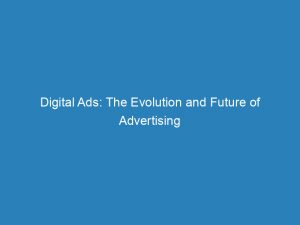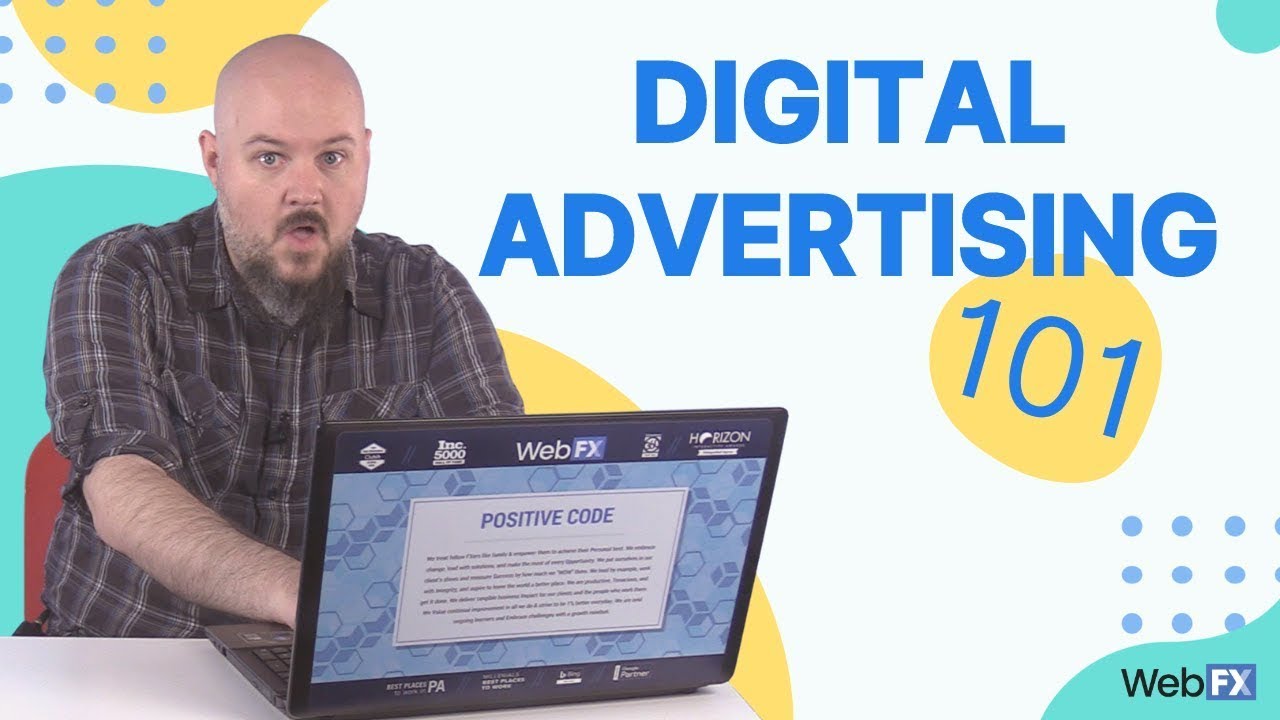In the ever-evolving landscape of marketing, the rise of digital ads has revolutionized the way businesses connect with their target audience. No longer constrained by the limitations of traditional advertising methods, digital marketing provides a world of possibilities for businesses of all sizes.
With the ability to quickly create captivating ads, target specific customer segments, and measure results with precision, the realm of digital advertising offers a holy grail for entrepreneurs seeking to maximize their return on investment. Join us as we delve into the vast potential of digitalads and unravel the secrets to thriving in the digital era.
| Item | Details |
|---|---|
| Topic | Digital Ads: The Evolution and Future of Advertising |
| Category | Ads |
| Key takeaway | In the ever-evolving landscape of marketing, the rise of digital ads has revolutionized the way businesses connect with their target audience. |
| Last updated | December 27, 2025 |
digital-ads">digital ads
Digital ads are a powerful tool in today’s marketing landscape. They offer numerous benefits, such as the ability to create and distribute quickly, unlike traditional print ads.
Updated for 2025’s advertising best practices.
Additionally, digital ads can be easily changed even after they have been published, providing flexibility in terms of creative content, timing, frequency, and targeting. Although digital advertising can be expensive for complex campaigns, it is accessible for smaller businesses.
With the increasing number of internet users, online marketing has become essential. Digital marketing includes various channels like search engines, social media, and email, allowing marketers to reach a larger audience while providing opportunities for targeted advertising.
Furthermore, digital marketing is more cost-effective and allows for real-time measurement and adjustments, maximizing ROI and providing cost-effective strategies. Overall, digital ads offer marketers the opportunity for creativity, experimentation on a budget, and the ability to align campaigns with their overarching goals.Key Points:
- Digital ads are quick to create and distribute, unlike traditional print ads.
- They offer flexibility in terms of changing content, timing, frequency, and targeting.
- Digital advertising is accessible for smaller businesses.
- Digital marketing includes various channels like search engines, social media, and email.
- It allows for targeted advertising and reaching a larger audience.
- Digital marketing is cost-effective, allows for real-time measurement and adjustments, and maximizes ROI.
Sources
https://advertising.amazon.com/library/guides/what-is-digital-advertising
https://blog.hubspot.com/marketing/what-is-digital-marketing
https://www.webfx.com/digital-advertising/glossary/what-is-digital-advertising/
https://advertising.amazon.com/
Check this out:
💡 Pro Tips:
1. Use A/B testing to optimize your digital ads: By testing different variations of your ads, such as different headlines, images, or calls to action, you can identify what resonates best with your target audience and optimize your ads for better performance.
2. Leverage audience targeting options: Take advantage of the targeting capabilities offered by digital advertising platforms. Consider targeting by demographic, geographic location, interests, or behaviors to reach the right audience for your product or service.
3. Utilize retargeting techniques: Don’t overlook the power of retargeting. By tracking website visitors and showing them relevant ads as they browse other websites or social media platforms, you can remind them of your brand and increase the chances of conversion.
4. Incorporate video ads: Video ads can be highly effective in capturing attention and delivering your message in a compelling way. Consider creating engaging video content that aligns with your brand and resonates with your target audience.
5. Monitor and analyze campaign data: Take advantage of the data provided by digital advertising platforms to gain insights into your campaigns. Monitor key metrics such as click-through rates, conversion rates, and cost per acquisition to evaluate the success of your ads and make data-driven decisions for future campaigns.
Quick Creation And Distribution Of Digital Ads
In today’s digital age, businesses need to stay ahead of the game when it comes to advertising. One significant advantage of digital ads is the ability to create and distribute them quickly.
Unlike traditional print ads that require time-consuming processes, digital ads can be designed, approved, and published in a matter of hours or even minutes, providing businesses with an agile and responsive advertising solution.
Furthermore, digital ads offer the flexibility to make changes even after they have been published. This level of adaptability allows businesses to experiment with different messaging, creative elements, and targeting strategies.
For example, if a certain headline or image is not resonating with the audience, it can be modified or replaced to optimize the campaign’s performance. This ability to iterate on the fly is a game-changer for marketers, empowering them to constantly improve their ad content and achieve better results.
Flexibility Of Digital Ads
The flexibility of digital ads goes beyond just making quick changes. It extends to various aspects of advertising, including creative content, timing, frequency, and targeting.
Digital ads provide marketers with the freedom to test different creative elements, such as images, videos, and copy, to see what resonates best with their target audience. This experimentation allows for continuous improvements and enhances the effectiveness of the ad campaigns.
Moreover, digital ads offer precise control over when and how often they are displayed. Marketers can schedule ads to appear at specific times and days to reach their target audience when they are most likely to be online.
They can also adjust the frequency of ad display to prevent overwhelming the audience with repetitive messaging. This level of control ensures that ads are delivered at the right time, reaching the right people, and maximizing the chances of generating engagement and conversions.
Cost Accessibility For Small Businesses
Although digital advertising can be expensive for complex campaigns, it is accessible for smaller businesses with limited budgets. Compared to traditional advertising methods such as TV or print, digital ads offer cost-effective solutions that help level the playing field between small and large businesses.
With various online advertising platforms available, businesses can choose platforms that align with their budget constraints while still reaching a wide audience.
Digital advertising also provides the advantage of being scalable. Small businesses can start with a modest budget and gradually increase their investment as they see positive results.
This incremental approach allows businesses to measure the effectiveness of their campaigns and make adjustments accordingly, ensuring that each marketing dollar spent is optimized.
Moreover, the accessibility of digital advertising platforms allows small businesses to target their ads precisely to the desired audience, avoiding wasteful spending on irrelevant impressions. By leveraging targeting options such as demographics, interests, and behaviors, small businesses can focus their advertising efforts on the most relevant consumer segments, increasing the chances of conversions and maximizing their return on investment.
Programmatic Advertising • Performance Marketing Tips • Buy Traffic • Native Ad Network • Self-Serve DSP Platform











